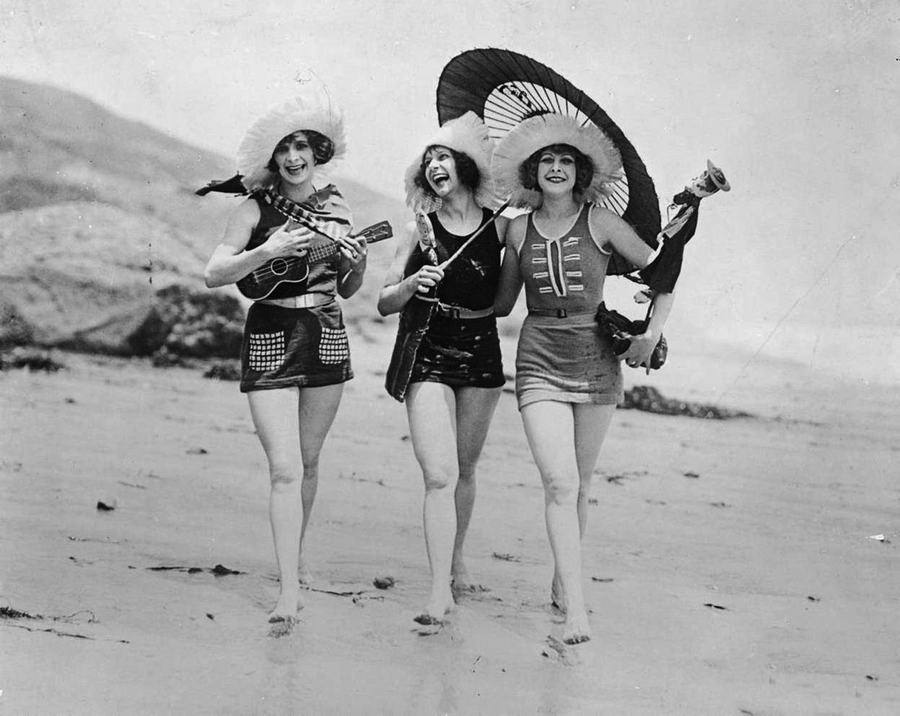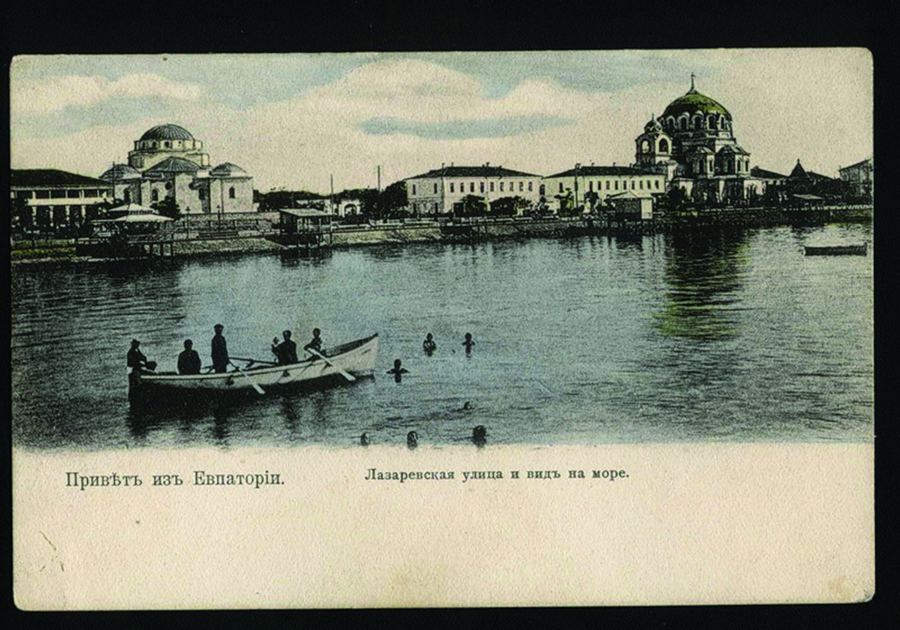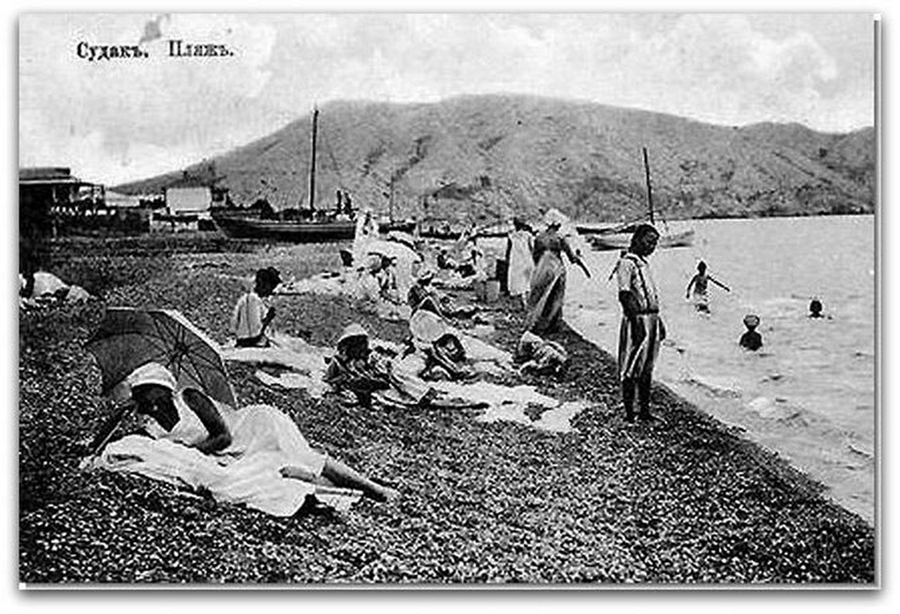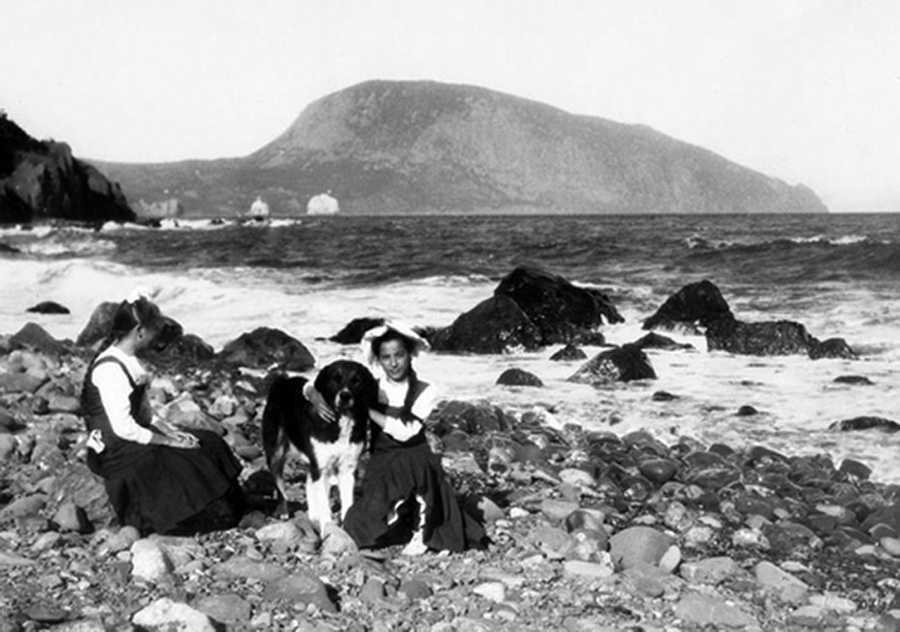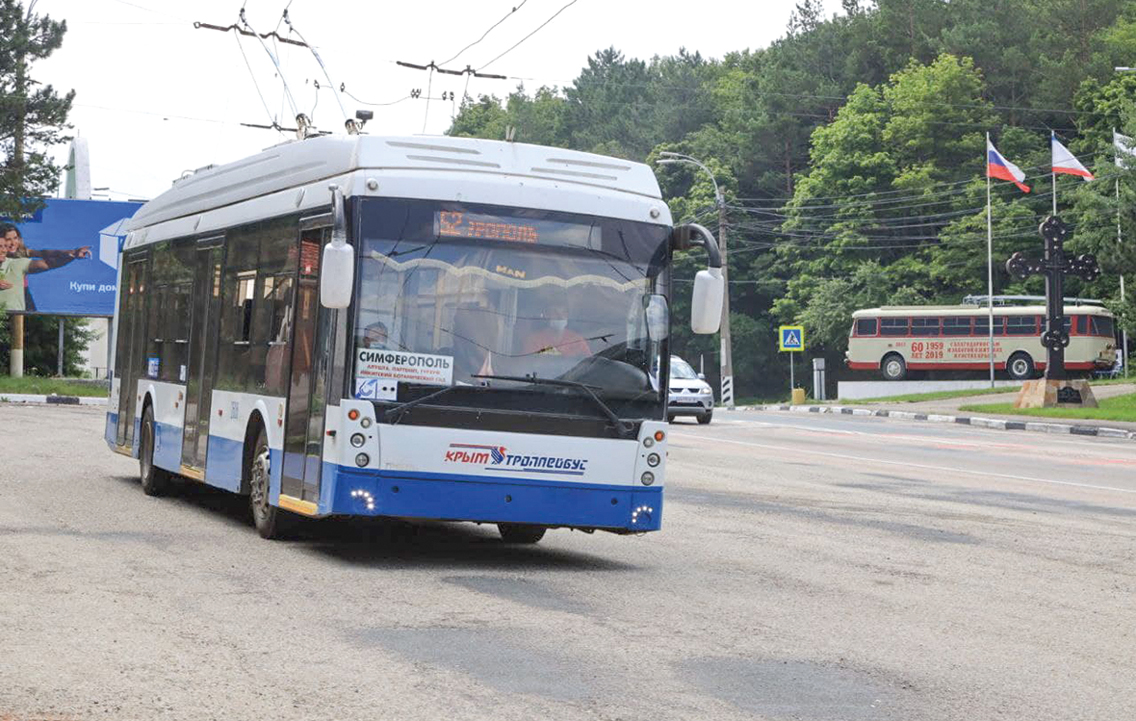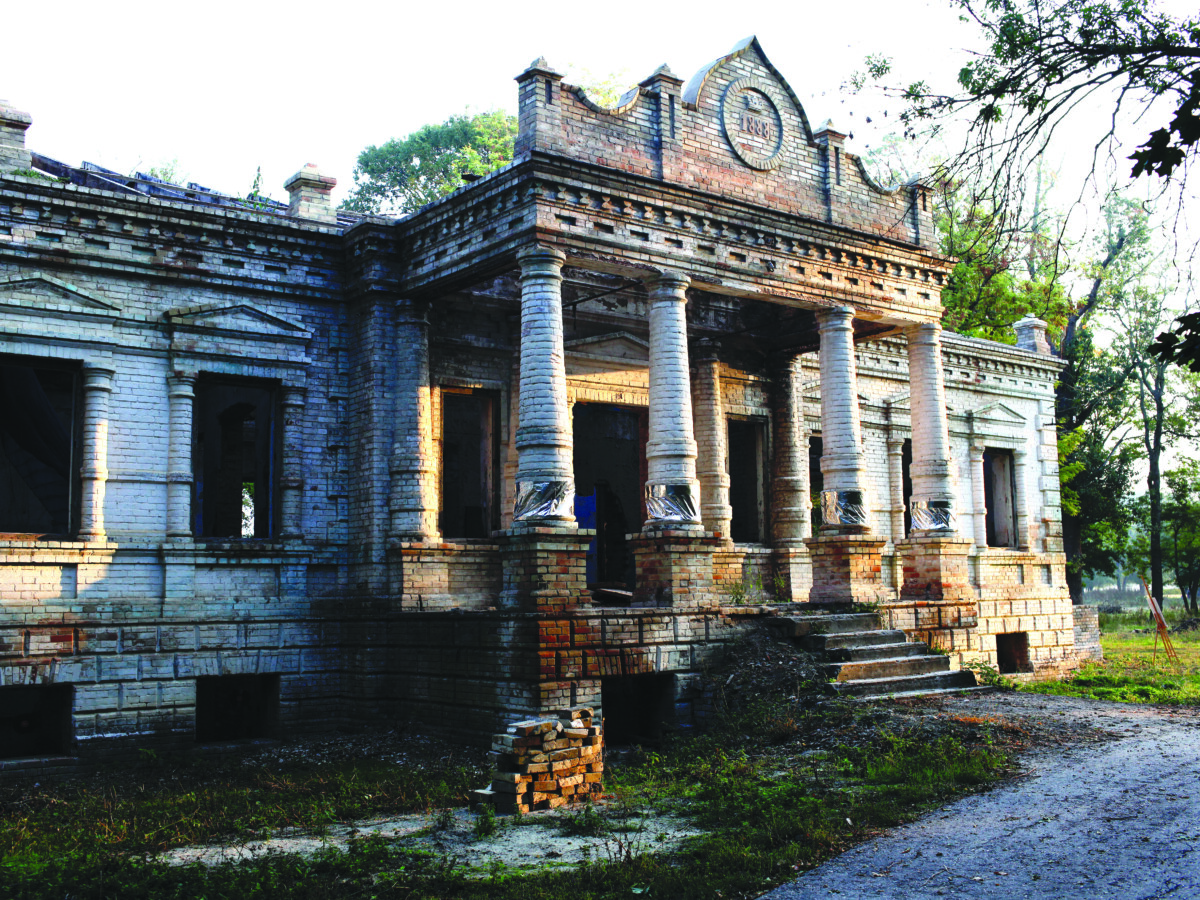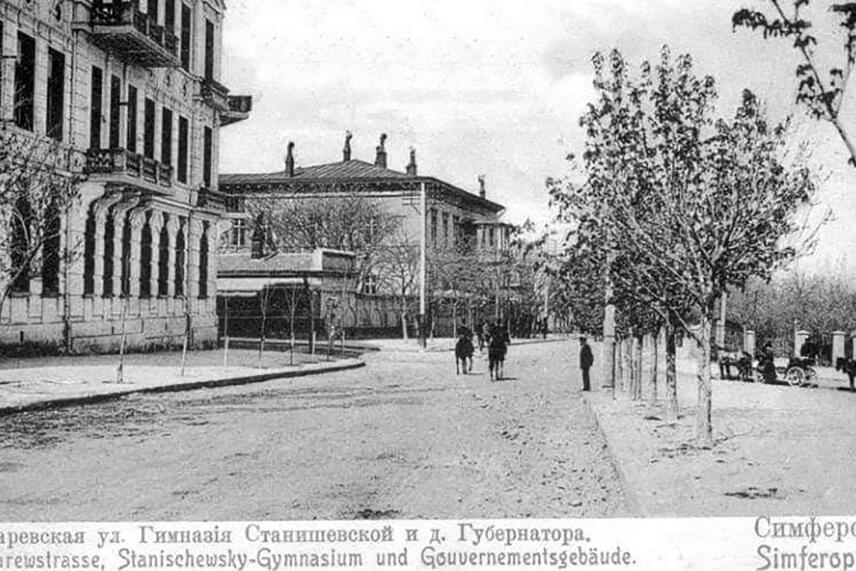The Crimean resort history did not start with an exotic South with its transparent bays, chiseled cliffs, cicadas and cypresses, but with the modest West with dusty steppes and mud lakes. After all, the first holiday-makers came to the peninsula not to sunbathe on the sea sand, but to bury in healing mud. But even when the resort accent shifted from the lake shores to the sea ones, the rest there still differed essentially from the current one.
OVER HEAD AND EARS IN MUD… HEALING ONE
At the end of XVIII century Pavel Sumarokov, a traveller and one of the path breakers of Crimean land, wrote in glowing terms in and full details about the mud therapy in Saki Lake. Having experienced himself the curating action of mud, he gave precise recommendations considering the best time of conducting the procedures: “A prime time for burying oneself into mud starts on July 20th and lasts till September the 1st”.
Initially the patients were treated by almost complete burying in the mud. On the lake shoreline a pit was dug, the patient was placed there and then covered with a layer of dirt – “so that there would be no holes anywhere”. The patient lay in the mud bath as long as he could, “as long as the forces and the disease conditions allowed”. Most of patients had their forces for about forty minutes and then they started to feel singing in the ears, heartbeat and vertigo. Those brought up to the mark were took out of the pit at all speed, washed the mud off them and put to bed for a good sweat.
Later baths were provided not in the lake itself, but on the special territory on the shore, where the mud was brought. In 1832 the hotel in Saki was built which encountered 20 rooms, and therefore the attractiveness of Crimea as a mud therapy resort began to grow. If in 1828 there were 28 patients officially registered who were treated with mud, then in 1832 – over a hundred, in 1850 – about 330. By the way, Nikolay Gogol was among first guests of the mud therapy resort.
In July 1835, he wrote to Vasily Zhukovsky: “I was in the Crimea, where I soiled myself in mineral mud”. And, at the beginning of the 20th century, the resort acquired global fame – it was visited not only from remote Russian provinces (Arkhangelsk, Vyatka, Perm), but also from other countries: England, America, Austria, Bulgaria, France, Syria, Persia … The fame of the Lake Saki healing mud contributed to the creation of mud therapy in the neighboring Evpatoria, on the Moinak Lake. The mud therapy clinic, capable of attracting the rich, appeared here in 1886, when on the lake was built a private “Bittern- and mud therapy institution”, which became the first resort institution in Evpatoria. Despite the fact that mud therapy was an expensive taste (the monthly fee was equal to the average annual salary of a worker), the number of people who wished to improve their health with the help of the Crimean lakes was growing. By the way, the Yevpatoria tram, appeared in 1914, owes much to its existence to the mud therapy clinic – this new transport mode was developed in order to make it easier for holidaymakers to get to Moinak Lake.
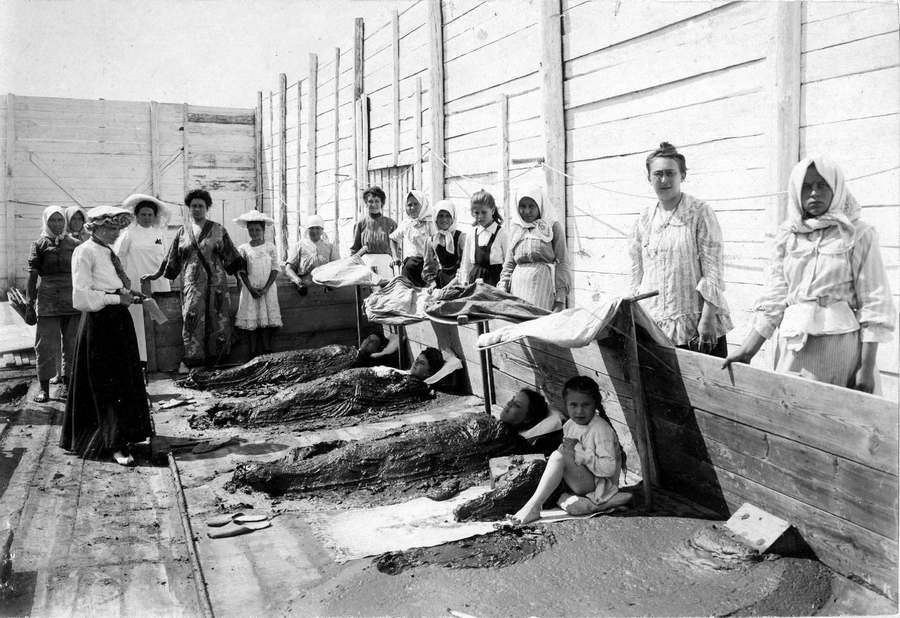
THE BEAST WITH THE TAUT CHINE
It’s now that it seems to us that on a hot summer day the best pastime is to sunbathe on the beach and to swim in the sea. But a short time ago, it wasn’t common to rest like that: the holidaymakers who came to the Crimea in the late XIX century, as a rule, were limited to walking along the sea in a full kit. Swimming was ventured only for a few – for those who had never seen the sea before, it seemed like a threatening and dangerous environment. “The sea is very surprising, very frightening when you see it for the first time. As long as you get used to the sea, it seems like a subtle enemy for a long time, you are waiting for anything from it”, —the writer and traveller Evgeny Markov wrote in his “Crimean Sketches”. And yet, the so-called decent public, by and large, preferred to rest on the seashore as described in the novel “In front of the Mirror” by Veniamin Kaverin: “Men in boaters and tussah silk jackets are reading newspapers sitting on the benches, and ladies under the umbrellas are musing upon the distance scene. On the shore you can “catch a breath of the sea air”. The mothers and grandmothers are sitting in the rattan chairs, and neat children in sailor suits are playing in the sand”.
More simple and cheap bathhouses were meant as cabins for changing and storing clothes. In the more expensive bathhouses, a wide range of the most diverse services was offered: a hairdressing salon, a buffet, a reading room with fresh newspapers and magazines, a shower, a massage, healing muds, a rest area on the roof. Some bathhouses had warm sea baths – for those who considered the sea water to be cold, it was heated.
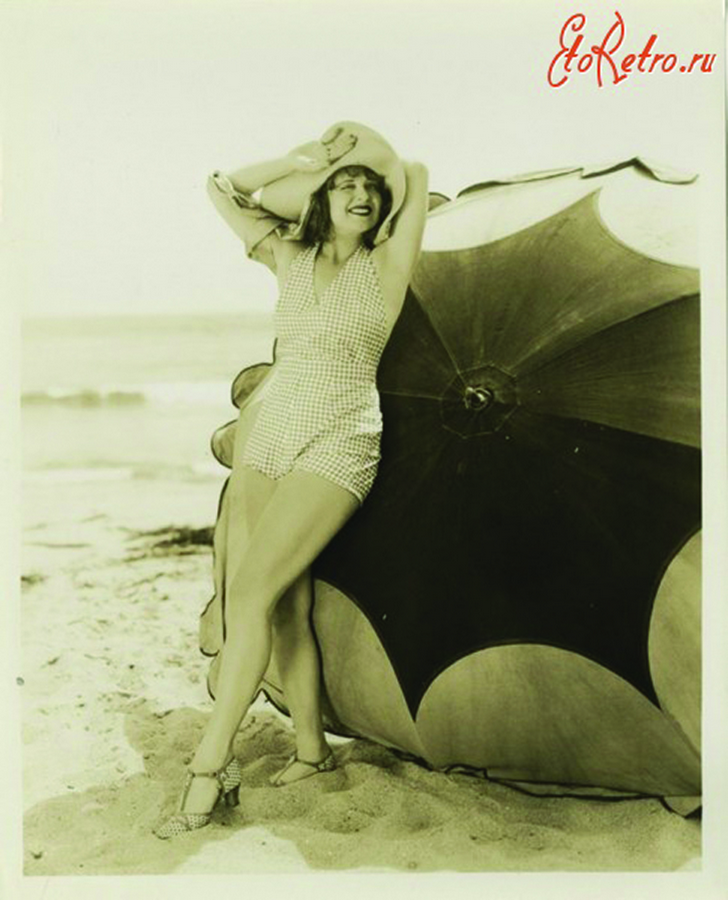
CABINS ON PILES
The more brightly the Crimea blossomed as a resort, the more there were people who wanted not only to catch a breath of the sea air, but also to swim in it. The thing is that a hundred years ago the sea bathing was a serious procedure, requiring special equipment, let us say so. An indispensable attribute of any civilized beach were the bathhouses – light wooden pavilions, located in shallow water on piles. A thin bridge led to the bathhouses from the shore. Inside the pavilions were divided into cabins – in there one could change into a bathing suit and descend into the sea via ladder. At the beginning of the XX century, the Crimea was full with bathhouses. There were thirteen of them (both state-owned and private) only in Feodosia. The largest bathhouses had their own names – for example, “Crystal Waters” in Sevastopol. By the way, these bathhouses also gave the name to Cape Khrustalniy – that’s where exactly they were located. A lot of large seaside hotels had their own bathhouses of the same name. For example, the Evpatoria hotel “Dulber” among other services offered its customers to use the bathhouse with the same name. More simple and cheap bathhouses were meant as cabins for changing and storing clothes. In the more expensive bathhouses, a wide range of the most diverse services was offered: a hairdressing salon, a buffet, a reading room with fresh newspapers and magazines, a shower, a massage, healing muds, a rest area on the roof. Some bathhouses had warm sea baths – for those who considered the sea water to be cold, it was heated. On the part of the administration the only requirement was: “Bathing suits are obligatory for people of both sexes over 10 years old”. Swimsuits of those times were very cumbersome and inconvenient, and, apparently, many people wanted to neglect them.
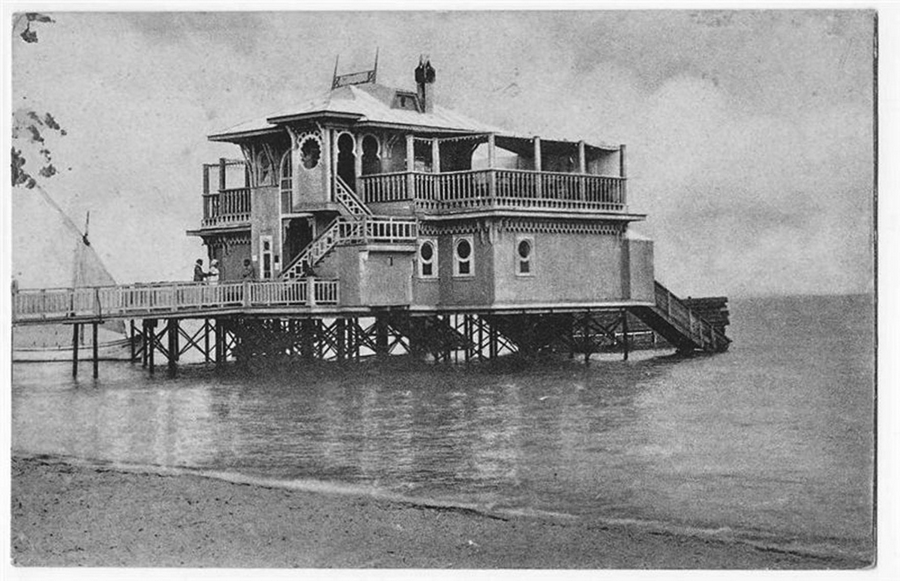
“… ABSOLUTELY WITHOUT SWIMSUITS”
However, the world beach fashion canons at local level were far from always respected. The wealthy metropolitan public who came to the Crimea could afford to visit expensive bathhouses and special swimsuits (and they were of high cost). But, the ordinary folks swam, as they had been talking then, from the shore in their underwear or even naked. There were separate beaches for men and women (as well as places for bathing the horses), although such division existed far from everywhere. Thus, describing resort life of Simeiz, the newspaper noted the simplicity of the customs on the local beach: “Most men swim and take sun baths absolutely without swimsuits. This embarrasses the ladies who unwillingly have to watch such show”. Ivan Sarkizov-Serazini in the “Memories of Feodosia” wrote about the artists of the Suvorin Theater, who spent the summer at the country house of their boss: “Women and men did not consider bathing suits, especially in the early morning hours. The actresses did not pay any attention to the curious Feodosia citizens who sat on the coastal heights, and dangled innocently in the water like ancient Greek sirens. Oh! If only these sirens knew what cynical exclamations were coming to their address, from the part of the enkindled by the naked female body fishers-spectators who gathered at the hill!” Max Voloshin and writers, poets and artists who visited him in Koktebel also preferred sunbathing and swimming naked, in order to achieve complete unification with the surrounding virgin nature. In 1914, Voloshin was accused of painting over the inscriptions on a pole installed by the authorities on the beach in front of his country house. These inscriptions denoted swimming places for men and women. In response, Voloshin announced that, firstly, the seaside foreland belongs to Mr. Junge, who did not give his permission to install such a pillar, and secondly, the inscriptions “for men” and “for women” are indecent – they have “definite and unambiguous meaning and are inscribed only in well-known places”.
An indispensable attribute of any civilized beach were the bathhouses – light wooden pavilions, located in shallow water on piles. A thin bridge led to the bathhouses from the shore. Inside the pavilions were divided into cabins – in there one could change into a bathing suit and descend into the sea via ladder. At the beginning of the XX century, the Crimea was full with bathhouses.
On the part of the administration the only requirement was: “Bathing suits are obligatory for people of both sexes over 10 years old”. Swimsuits of those times were very cumbersome and inconvenient, and, apparently, many people wanted to neglect them.
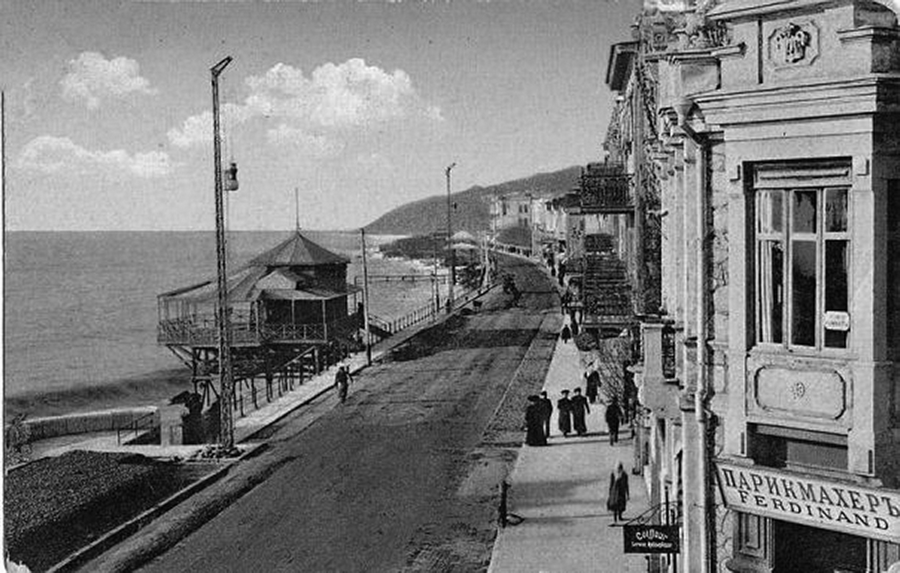
TAKE A THE GUIDE – GO ALONG THE SEA
Guidebooks on Crimea 100 years old described both the sights of the peninsula and its beaches. It is interesting to read that data and compare it with our times. The best publication of this kind was the guide by Grigory Moskvich. A native of Yalta, he, however, did not hold much account to the beaches of his native city: “Sea swimming in Yalta does not rank among the best in the Crimea. First of all, Yalta, considering its entire extensive coastline, had no place to swim: a significant part of the coast is a private property, where a city dweller cannot swim; the other part, although a city property, is occupied by the embankment and the dockyard neighboring the pier head, which extremely pollutes the sea water. Including the number of spontaneous reasons that make up the bathing faults in Yalta belong the same coastal currents, because of which the sea water temperature is extremely unstable: quite often the temperature from 18-20 degrees drops down to 8-10 degrees having no apparent reason. The sea floor is stony, so you cannot swim without shoes”.
THE GUIDE OF GRIGORY MOSKVICH HIGHLIGHTS SEVERAL SOUTH COAST BEACHES WHERE IT IS MUCH MORE PLEASANT TO SWIM THAN IN YALTA
Alupka. “Bathhouses. The fee is 10 kopecks. The subscription is cheaper. A free bathing is allowed on the Bombor coast near the Black Bugor, where special hours are appointed for men and for women, and on Ginken coast. The water is clean, but the sea floor is stony and deep. In addition to individual mobile cabins, there are new exemplary bathhouses with low fees and warm sea baths. The beach has a small coffee house which is a meeting point for summer residents”.
Gurzuf. “The summer heat is eased by the sea proximity and a beautiful park with ancient trees. The flat beach is convenient for bathing. There are separate bathhouses for men and women”.
Ai-Todor. “Since 1903, on the shore, near the swimming place, a shelter has been opened, where you can find samovars, milk, soft drinks and so on”.
The currently famous Koktebel is mentioned as a “small Bulgarian village”, where there are only 400 inhabitants. “The Koktebel coast is famous for its charming seashells, colorful stones and other, for the gathering of which many Feodosia citizens come in the summer”.
Maximillian Voloshin and writers, poets and artists who visited him in Koktebel also preferred sunbathing and swimming naked, in order to achieve complete unification with the surrounding virgin nature. In 1914, Voloshin was accused of painting over the inscriptions on a pole installed by the authorities on the beach in front of his country house. These inscriptions denoted swimming places for men and women.
The best beaches not only of the Crimea, but of all Russia in the “Crimean Guide” G. Moskvich consider Evpatorian: “Evpatoria is famous for the best in Russia sea bathing. Smooth sand velvet sea floor, gradually deepening, the water temperature which slightly fluctuates during the bathing season, rare and insignificant roll of the sea make it possible to conduct systematic bathing in the sea, even for weak people and children. The coast is covered with fine sand for dozens of versts in the area of Evpatoria. For the correct application of solar, sand, air and warm sea baths in Evpatoria, the doctors arranged four seaside beaches with gymnastic halls and all facilities for the abovementioned baths and sea swimming. Pleasantly Evpatoria is also marked by the absence of mosquitoes and back flies”.

